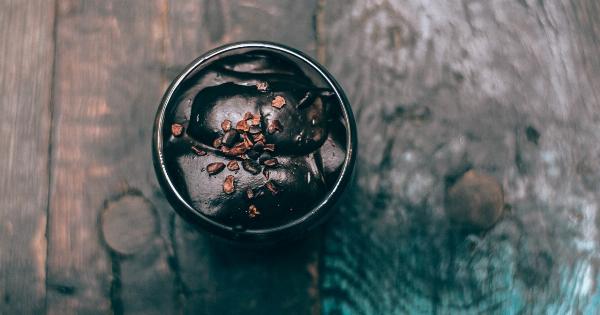Face spots, commonly known as hyperpigmentation, are a common skincare concern for many people. These dark patches or spots on the skin can be caused by various factors such as sun exposure, hormonal changes, acne scars, or aging.
Dealing with face spots can be frustrating, but understanding the right skincare ingredients can help you effectively address this issue. In this article, we will explore the best solutions to face spots by providing valuable ingredient insights.
1. Vitamin C
Vitamin C is a powerhouse ingredient when it comes to addressing face spots. This antioxidant not only brightens the overall complexion but also helps fade hyperpigmentation.
By inhibiting the production of excess melanin, vitamin C can gradually lighten dark spots over time. Look for skincare products that contain a stabilized form of vitamin C, such as ascorbic acid or sodium ascorbyl phosphate, for maximum effectiveness.
2. Niacinamide
Niacinamide, also known as vitamin B3, is another remarkable ingredient for treating face spots. It helps inhibit the transfer of melanin to the skin, reducing the appearance of hyperpigmentation.
Additionally, niacinamide has anti-inflammatory properties that can soothe the skin and even out overall skin tone. Incorporating niacinamide into your skincare routine can result in a more even and radiant complexion.
3. Retinoids
Retinoids, derived from vitamin A, are renowned for their ability to improve various skin concerns, including face spots. They work by accelerating cell turnover, which helps fade dark spots and promote the growth of fresh, evenly pigmented skin.
Retinoids also have exfoliating properties that remove dead skin cells, enabling better absorption of other skincare ingredients. However, use retinoids with caution as they can cause skin sensitivity and should be introduced gradually into your routine.
4. Alpha Hydroxy Acids (AHAs)
AHAs, such as glycolic acid and lactic acid, are excellent exfoliants that help eliminate dead skin cells and encourage skin renewal.
By gently exfoliating the surface layer of the skin, AHAs can fade face spots and reveal a smoother, more even-toned complexion. Start with a lower concentration of AHAs and gradually increase as your skin adjusts to prevent irritation. Moreover, it is crucial to wear sunscreen when incorporating AHAs into your routine as they can increase sun sensitivity.
5. Azelaic Acid
Azelaic acid is a lesser-known but effective ingredient for treating face spots. It primarily works by inhibiting the production of excess melanin and reducing inflammation within the skin.
This multifunctional ingredient not only helps fade hyperpigmentation but also improves acne-prone skin and reduces redness. Azelaic acid is generally well-tolerated and suitable for various skin types, offering a gentle yet potent solution for face spots.
6. Kojic Acid
Kojic acid is derived from various fungi and is known for its skin-lightening properties. It inhibits the production of tyrosinase, an enzyme responsible for melanin production, resulting in a reduction of face spots over time.
Kojic acid is often found in serums or creams targeting hyperpigmentation, and consistent use can lead to visible improvements in skin tone and texture.
7. Licorice Extract
Licorice extract, derived from the root of the licorice plant, contains a compound called glabridin, which has skin-brightening properties. It helps to inhibit the production of melanin and reduce the appearance of face spots.
Licorice extract also has soothing and anti-inflammatory effects on the skin, making it an excellent choice for those with sensitive or irritated skin.
8. Mulberry Extract
Mulberry extract, derived from the mulberry plant, has been used for centuries in traditional medicine for its skin benefits. It contains arbutin, a natural compound that inhibits melanin production, thus lightening face spots.
Mulberry extract is often found in skincare products formulated to even out skin tone and reduce hyperpigmentation.
9. Vitamin E
Vitamin E is a potent antioxidant that helps protect the skin from free radicals and environmental damage. While it may not directly fade face spots, it plays a crucial role in maintaining overall skin health.
Vitamin E can help prevent further damage and promote skin healing, minimizing the appearance of hyperpigmentation.
10. Tranexamic Acid
Tranexamic acid, originally used to control bleeding, has gained recognition for its ability to address face spots. It works by interfering with the production of melanin and preventing excessive pigmentation.
Tranexamic acid is often found in serums or creams targeting post-inflammatory hyperpigmentation, melasma, or sun spots.
In conclusion, having the right skincare ingredients can make a significant difference when it comes to tackling face spots or hyperpigmentation.
Incorporating vitamin C, niacinamide, retinoids, AHAs, azelaic acid, kojic acid, licorice extract, mulberry extract, vitamin E, and tranexamic acid into your skincare routine can help fade existing face spots and prevent new ones from occurring. It’s important to remember that consistency is key and incorporating proper sun protection is crucial to maintain the results achieved.






























